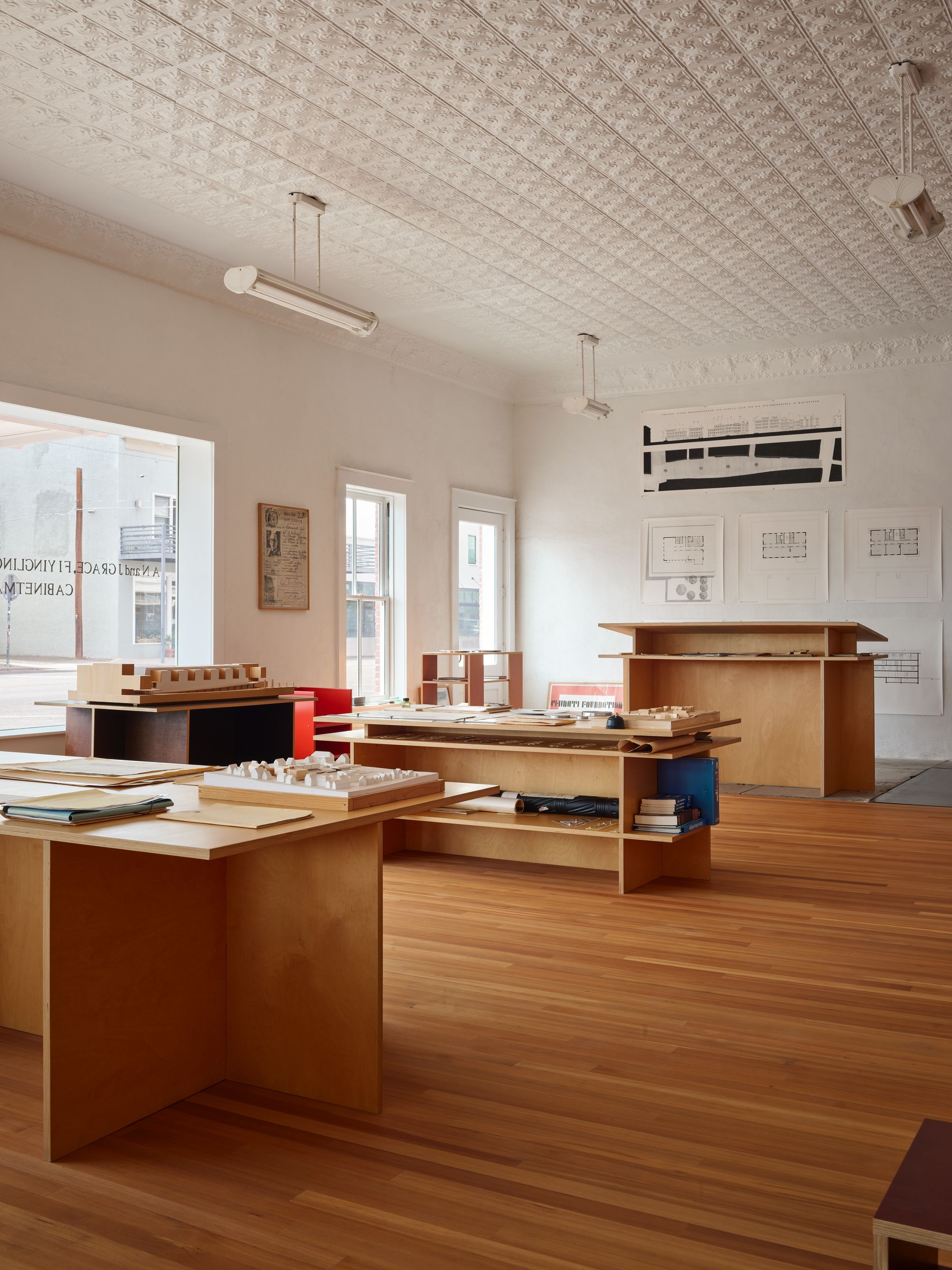
Architecture Office, Judd Foundation, Marfa, Texas. Photo by Matthew Millman © Judd Foundation.
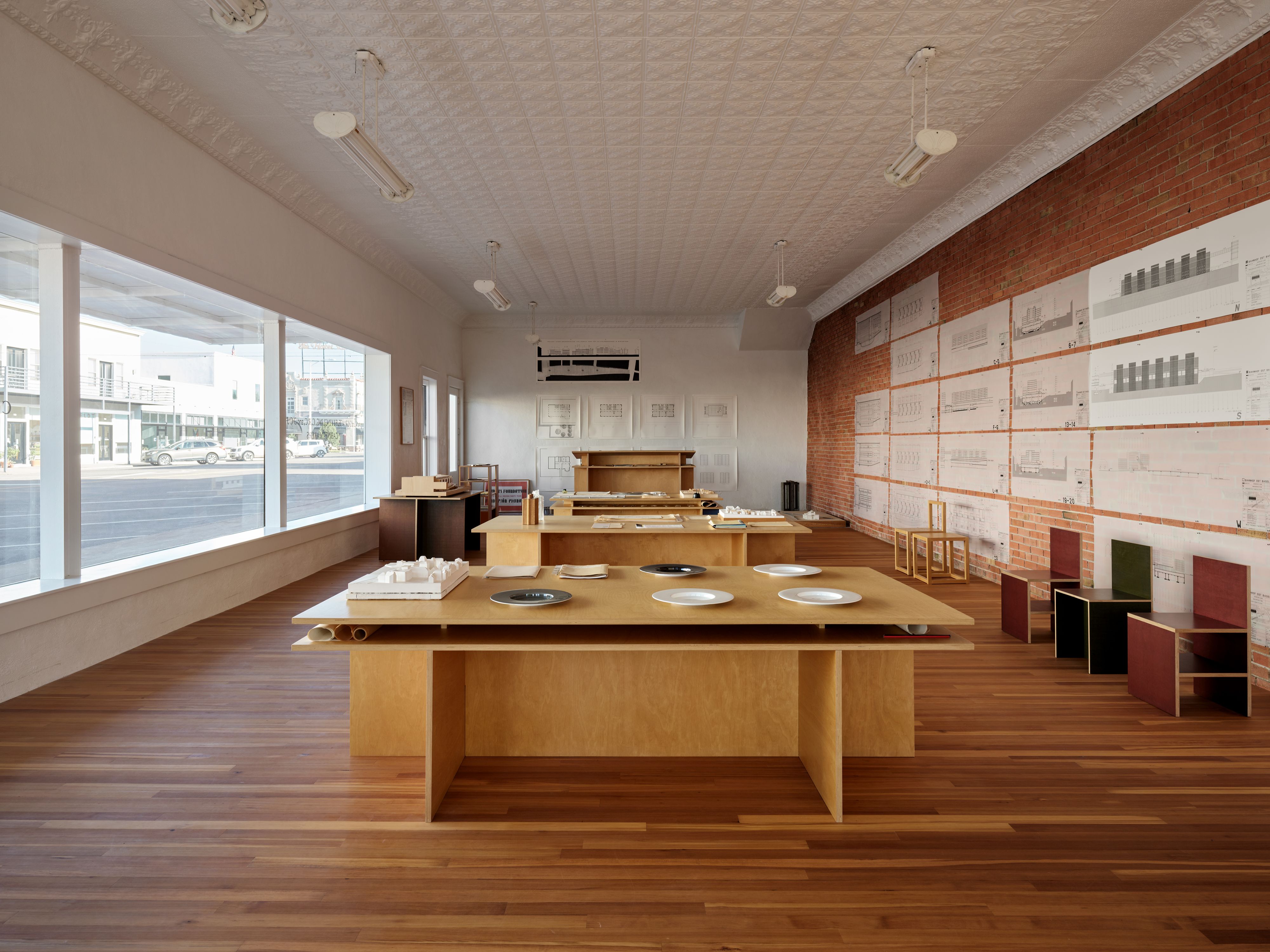
Judd’s Architecture Office, reopened in September 2025 to public tours, contains original furniture by Judd and Alvar Aalto alongside models and plans of Judd’s architectural work. Photo by Matthew Millman © Judd Foundation.
Someone who grew up in the Depression would likely remember the bony functionalism of vernacular Gilded Age industrial buildings with some fondness, just as we do today. It would have been natural for Donald Judd to romanticize the era that begat the buildings he reworked and aerated in New York and Texas. Most of these buildings, from the 1870 loft in SoHo that he bought in 1968 to the circa-1915 Glascock building in Marfa that he purchased in 1990 and became his Architecture Office, had a spartan elegance even before he touched them. As much about subtractive refinement as they were about additive construction, Judd’s modifications emphasized these buildings’ bare bones while highlighting space, which his art and thought needed. We need it too.
One of my favorite Judd-isms goes: “my aphorism is not that form follows function, but that it never violates it. Or common sense, for that matter.” Encountering Judd’s work — whether art, ideas, furniture, or buildings — is like encountering a manifesto for a common-sense revolution that I wish had happened. I admire Judd, deeply. I’ve studied the books of his writings and interviews like catechism. I’ve ogled the spangling on galvanized iron more than most. But I still suspect that part of my pleasure in regarding Judd’s work is that I get it wrong.
Over time, as many of these Judd’s spaces are put on display, they risk getting removed from their original function. Judd himself expressed his concerns about the functions of his works with characteristic lucidity: “furniture is furniture, it is not art. It is made to sit in, it is not made to look at.” But parsing Judd’s principles isn’t that straightforward, especially in today’s Marfa. In the cosmopolitan context of a globally popular cultural destination, does the table become art? Is there any room for slippage in this once serene order? One misstep and you’re Donald Trump, who mistook a Judd floor piece for a coffee table at The Whitney.
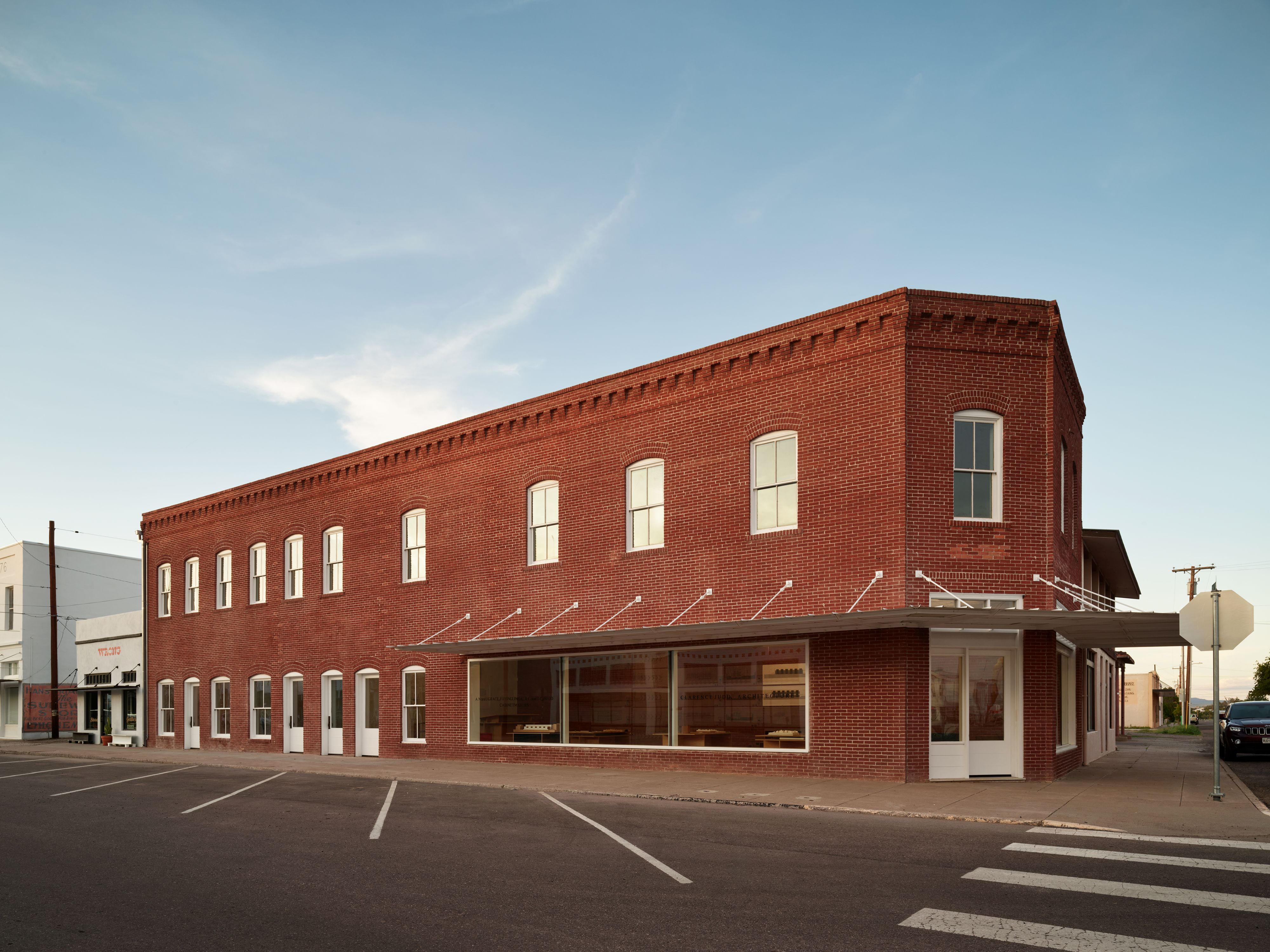
Architecture Office, Judd Foundation, Marfa, Texas. Photo by Matthew Millman © Judd Foundation.
Visiting 101 Spring Street feels, wrongly, tantamount to going to the Frick Collection. Likewise, a secular pilgrimage to Judd’s Marfa — whether the 100 milled aluminum boxes at The Chinati Foundation or his various living quarters and workspaces at the Judd Foundation —feels less like encountering space and more like inhabiting an ideology. The lines are crisp with room to breathe, the colors warmly logical, and the distinct functionality unwavering. Furniture is not art. Chairs are not architecture. “Root, hog, or die.” It all sounds nice and looks great, even if it feels somewhat out of place in today’s syncretic design world.
Judd’s Architecture Office provides a stark reminder of how art, furniture, and architecture should interrelate. Originally a commercial structure, the simple brick building could be anywhere, like something from an Edward Hopper painting. One sign on the west windows reads, “Clarence Judd, Architecture.” Clarence was Judd’s middle name, and the name of his grandfather, who was also a carpenter, honoring a family lineage of building things and shaping space. As with many of Judd’s properties, his architectural interventions stripped away any extraneous elements (paint, dropped ceilings, etc.) to reveal the underlying structure. In the case of 102 North Highland Avenue, this meant revealing the red brick of the exterior and interior walls, which have been meticulously repointed by Alpha Masonry. In June 2021, during the final stretch of a three-year renovation, one week before a new state-of-the-art fire system was set to be installed in the building, the Architecture Office went up in flames. Since then, it has been lovingly restored by the Judd Foundation, and opened to the public for the first time in September 2025, as the tip in the spearhead of the Marfa Restoration Project overseen by Troy and Schaum Architects.

Architecture Office, Judd Foundation, Marfa, Texas. Photo by Matthew Millman © Judd Foundation.
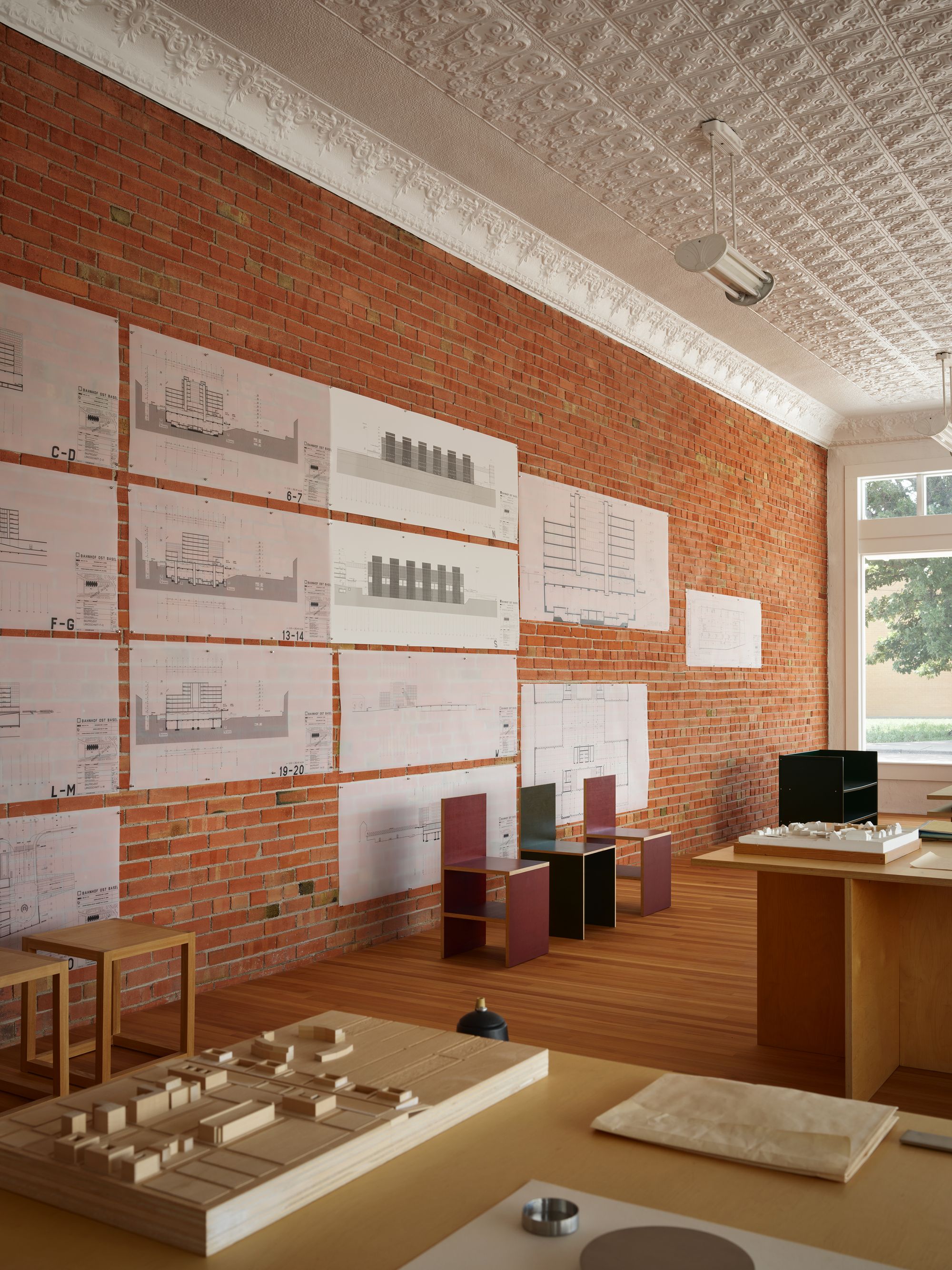
Architecture Office, Judd Foundation, Marfa, Texas. Photo by Matthew Millman © Judd Foundation.
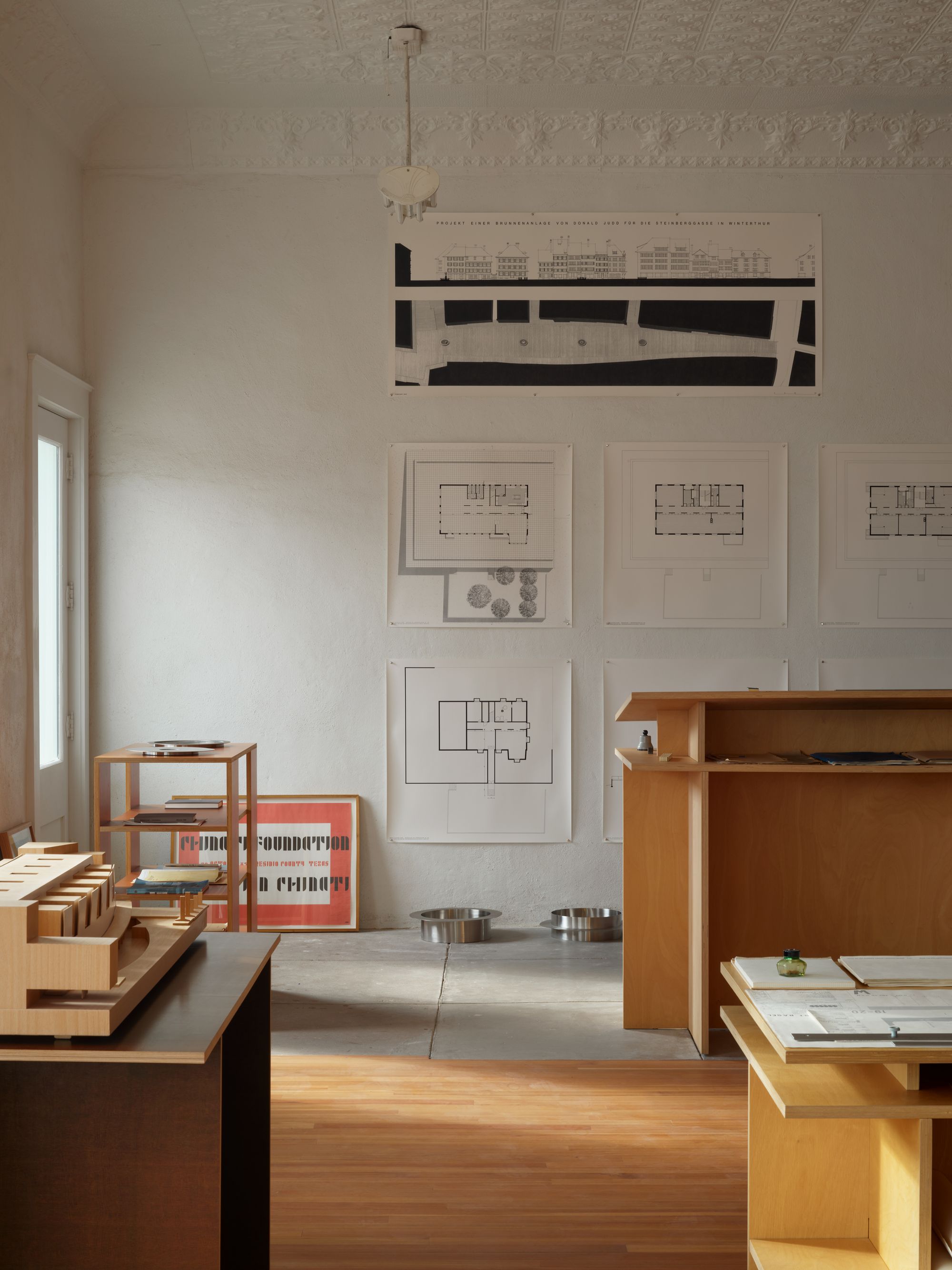
Architecture Office, Judd Foundation, Marfa, Texas. Photo by Matthew Millman © Judd Foundation.
Of course, Judd’s artwork won’t be found there, but the ground floor is filled with his gorgeous planar bureaucratic furniture in Finnish plywood. The interior is a column-free room, arranged like an idealized pre-digital architecture office. The furniture, including three tables, a writing desk, and straight-back chairs, is arranged, like his artworks, in algorithmic units. Ink-on-vellum architectural drawings and a model of the Peter Merian Haus (for which Judd worked as a consultant in 1993) in Basel, Switzerland, line the walls. The period-appropriate pressed tin ceiling and polished wood floor complement each other, so much so that all together, the components of the space feels eerily (and wrongly, I know) like an art installation — expositions on materiality and functional form. Upstairs, sinuous Aalto chairs accompany a suite of square enamel Chamberlain paintings, paired in refined declensions of Judd’s formal grammar.
Indeed, as Judd said: furniture is not art. But I grew up in a “yes, and” Scott Burton world where sharp lines like these got blurred. Like many, I go to Judd’s spaces to look at furniture that I’ll never use as furniture, which places it in the same conceptual realm as art. For example, as they sit atop the Slip Together Plywood Desk 75, is there no slippage between Judd’s glass water-bottle prototypes, with their interlocking ridges, and their stackable wooden molds? Is it wrong to relate the glass bottles, and their brick-like molds, to art? Depending on context and intention, glass can be a bottle or a brick, a utilitarian structure or useless, idea-based art. Didn’t Burton, after all, throw a brick through a glass window in Judd’s SoHo loft?
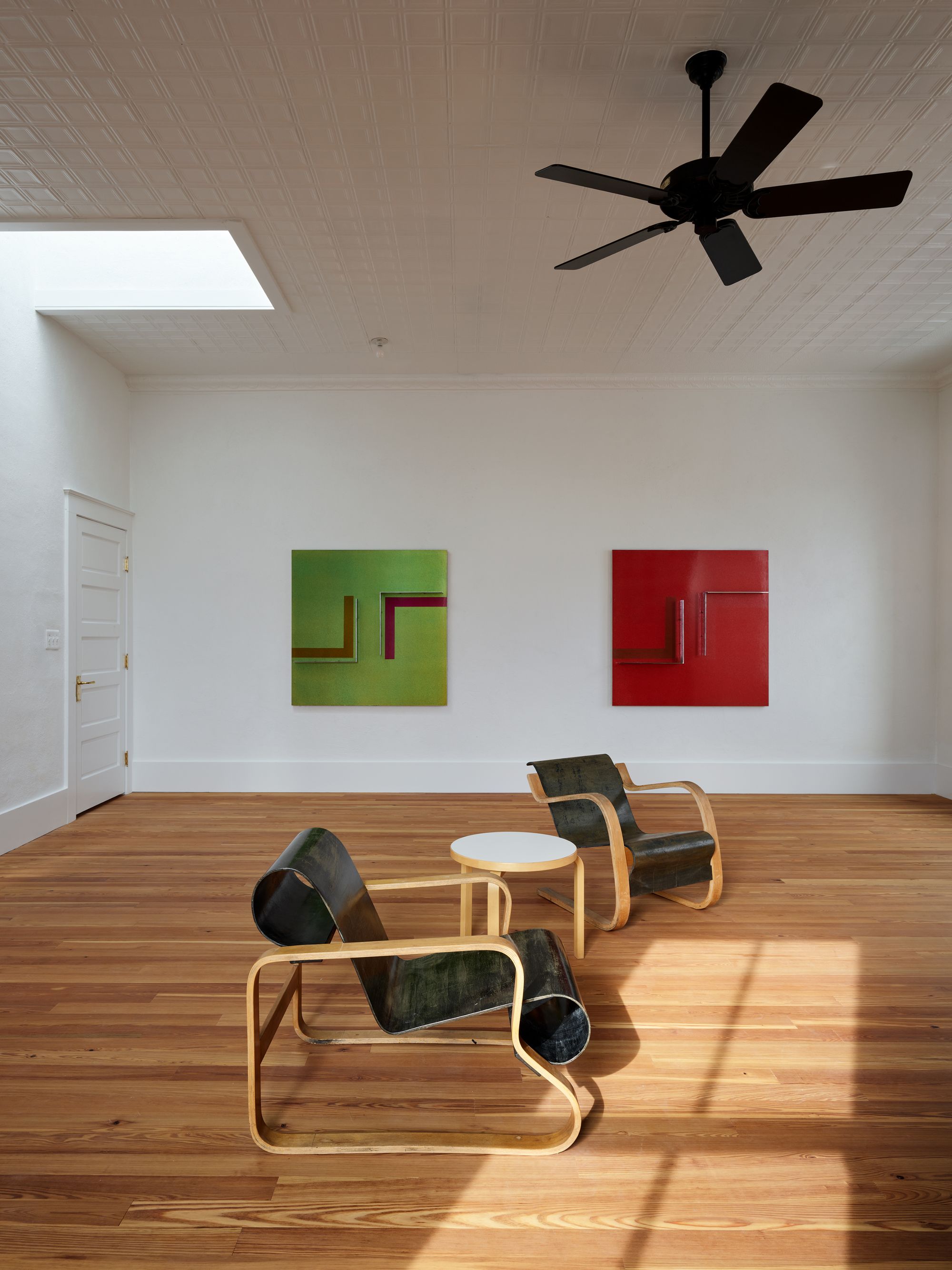
The second floor of Judd's Architecture Office featuring furniture by Alvar Aalto and paintings by John Chamberlain. Photo by Matthew Millman © Judd Foundation. John Chamberlain Art © Fairweather & Fairweather LTD / Artists Rights Society (ARS), New York.
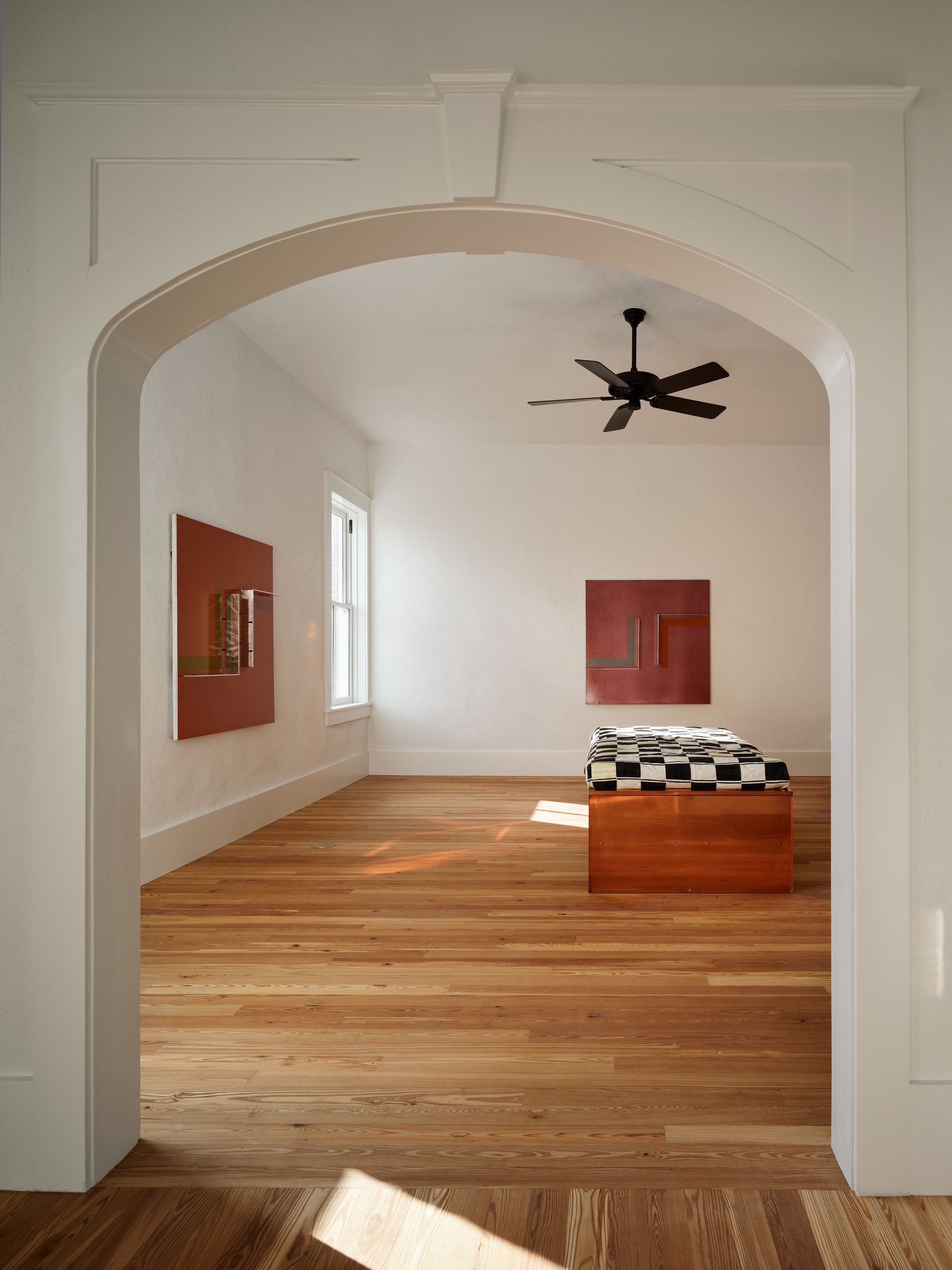
Second Floor, Architecture Office, Judd Foundation, Marfa, Texas. Photo by Matthew Millman © Judd Foundation. John Chamberlain Art © Fairweather & Fairweather LTD / Artists Rights Society (ARS), New York.
Judd’s aesthetic tenets could be prickly, but they were also political. A progressive environmentalist, a Jeffersonian anarchist, Judd’s refusal to separate art and life was not a Suprematist slogan but a Modernist commitment. At first, walking through the Architecture Office may feel like being administered a geometry exam by a Shaker wielding a protractor, but it is a clarion reminder that art is an idea, and ideas can change your life. Art leads architecture and design, and Judd’s work, spanning all three categories, has a scrupulous spine.
Like many of the Marfa buildings Judd refined, the office resists the preciousness we might associate with post-industrial nostalgia. If the white art deco Architecture Studio, directly across the street at 101 North Highland, is more of a showroom with Judd’s own early art on display, the squat brick Office is pared down for function. Not there to dazzle, these former workspaces teach you how to look, to think, to live. Today, maximalism and Nationalism often go hand in hand, so Judd’s principled resistance feels imperative. The work may be astringent, but it is allegiant to a fusion of art and life that refuses to reduce these categories to a smoothed slop.
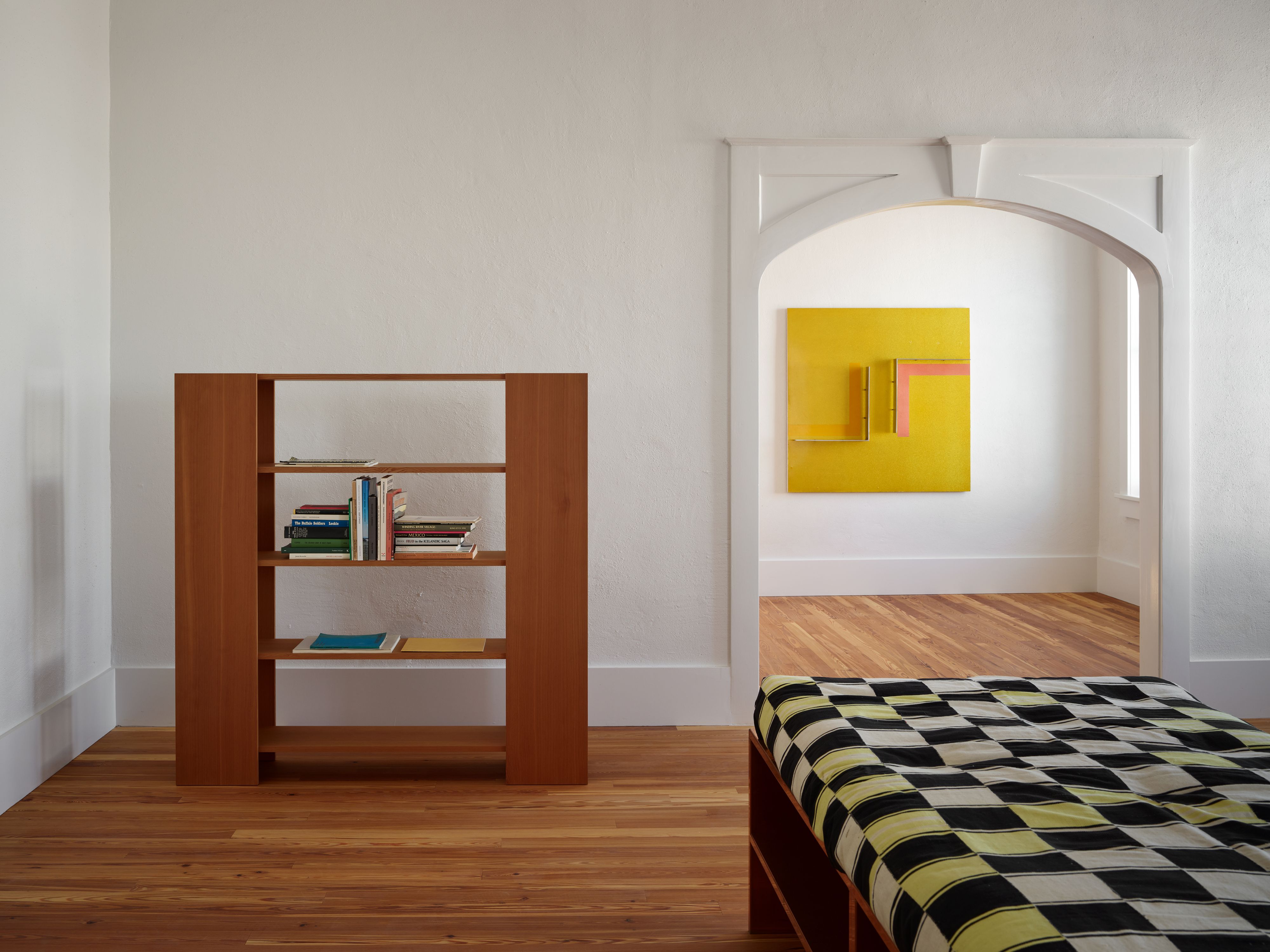
The second floor of Judd’s Architecture Office in Marfa, Texas, featuring his furniture design, including Bookshelf 34 (1983), alongside works from his permanent collection such as John Chamberlain’s Zia (1964). Photo by Matthew Millman © Judd Foundation. Additional courtesy John Chamberlain Art © Fairweather & Fairweather LTD / Artists Rights Society (ARS), New York.
So, now that the Architecture Office is open to the public, go! Get confused, get it wrong, and maybe feel some shame about how far we’ve fallen from this Modernist Eden. Experiencing Judd’s built world isn’t about getting his ideas “right” — it’s about attending to your own experience. Do that and you’ll come as close as possible to getting you right.
Around the time he established the Architecture Office, Judd praised Josef Albers and Mark Rothko for “a certain very nice quality in some art and literature that is calm and friendly, even light, and absolutely realistic about the nature of humanity and of life. It’s not cold at all or very somber, and certainly not nostalgic. It’s very much about being alive.” His workspace testifies that the very nice world Judd wanted to build, through calm distinctions between form and function, and friendly respect for the dignity of individuals, was as realistic and vital as the art he admired and the buildings he transformed. Fire be damned, they still stand. Regarding this, and nearly everything else, Judd was not wrong.